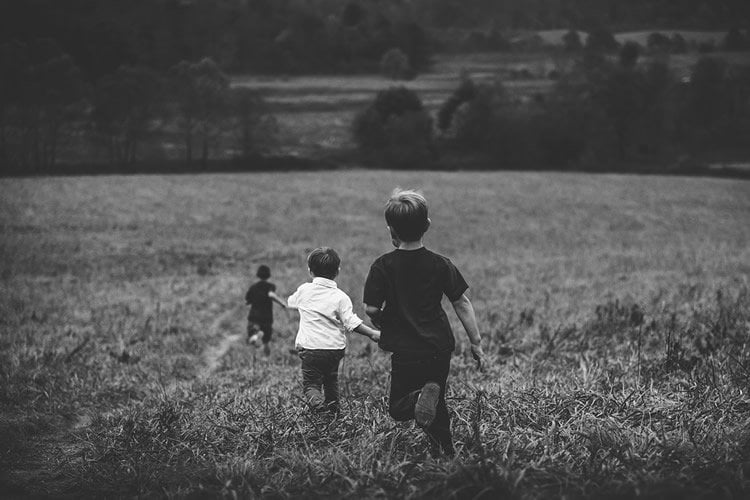The complexity of social exchanges is more than a child’s game.
While sharing toys and fighting with each other, kindergarten children helped researchers understand the patterns and qualities of interactions in social groups. The results were much more complex than the scientists originally predicted.
“We rightfully realize that social networks are important for many aspects of our lives. Yet when asked to define networks, we normally define them as ‘any interaction’, or only a specific type of interaction. We thought this does not reflect the richness of our social behaviors or the relative relationships between types of behaviors. We wanted to begin to address this,” said Jonathan Schneider, researcher from the Department of Biology at the University of Toronto.
To better understand the dynamics of these social interactions, the researchers carried out an investigation using a layered social network analysis. Their research was recently published in Frontiers in Psychology.
The researchers analyzed the structure of social interactions of 338 children between 4 to 6 years of age. All the children were kindergarteners attending public schools in Berkeley, California. The social exchanges took place in 29 classrooms.
“We noticed previous analyses presumed the hierarchical relationships between kids and we wanted to investigate this assumption. So we developed unbiased methods for assessing the relationship between different but overlapping networks within a classroom as well as the structural features of relationships in these networks,” said Joel Levine, co-author and researcher from the Department of Biology at University of Toronto.
The evidence of hierarchy between the children was grouped into six overarching categories forming three apparent reciprocal pairings: leadership/followship; aggression/submission; and resource struggle/prosocial.
However, results demonstrate that the idea of dominance and hierarchies in humans may not be as straightforward as was first assumed. While some of the 3-way interactions between the kids displayed transitivity, such as if Child A leads Child B, and Child B leads Child C, then Child A leads Child C – there were other 3-way interactions that were more complex. This suggests that people do not always behave in a hierarchical manner
“We rarely appreciate the amount of non-trivial organization between different social interactions. While aggression is sometimes met with submission, this ‘hierarchy’ is not always permanent,” Schneider said.

The researchers also said organization between individuals is complex. They were surprised to see that social interactions between some of the child “leaders” in the classrooms were more submissive in action than aggressive.
The authors anticipate that this method could eventually extend to more than two interaction types among more than three individuals. They believe this extension would improve our understanding of the multi-layered networks and provide a more accurate representation of the natural social environment of humans and other animals.
In addition, results could provide a framework for identifying those children that participate in abnormal network relationships to more readily ensure their support in an appropriately protective environment.
“Following the social development of a child as his environment changes so drastically over his lifetime makes any prediction difficult, but identifying the social aspect of a child is the first step towards more accurate correlations between the social aspect and future health,” concluded Schneider.
Funding: The study was funded by the Canadian Institutes of Health Research, Natural Sciences and Engineering Research Council, CRC, and Canadian Institute for Advanced Research.
Source: Michelle Ponto – Fontiers
Image Source: The image is in the public domain.
Original Research: Full open access research for “Layered Social Network Analysis Reveals Complex Relationships in Kindergarteners” by Mireille Golemiec, Jonathan Schneider, W. Thomas Boyce, Nicole R. Bush, Nancy Adler and Joel D. Levine in Frontiers in Psychology. Published online March 2 2016 doi:10.3389/fpsyg.2016.00276
Abstract
Layered Social Network Analysis Reveals Complex Relationships in Kindergarteners
The interplay between individuals forms building blocks for social structure. Here, we examine the structure of behavioral interactions among kindergarten classroom with a hierarchy-neutral approach to examine all possible underlying patterns in the formation of layered networks of “reciprocal” interactions. To understand how these layers are coordinated, we used a layered motif approach. Our dual layered motif analysis can therefore be thought of as the dynamics of smaller groups that tile to create the group structure, or alternatively they provide information on what the average child would do in a given local social environment. When we examine the regulated motifs in layered networks, we find that transitivity is at least partially involved in the formation of these layered network structures. We also found complex combinations of the expected reciprocal interactions. The mechanisms used to understand social networks of kindergarten children here are also applicable on a more general scale to any group of individuals where interactions and identities can be readily observed and scored.
“Layered Social Network Analysis Reveals Complex Relationships in Kindergarteners” by Mireille Golemiec, Jonathan Schneider, W. Thomas Boyce, Nicole R. Bush, Nancy Adler and Joel D. Levine in Frontiers in Psychology. Published online March 2 2016 doi:10.3389/fpsyg.2016.00276






